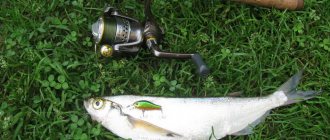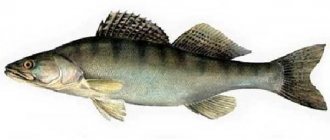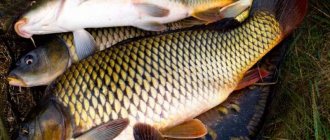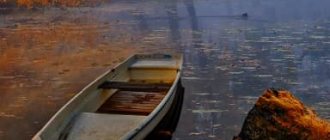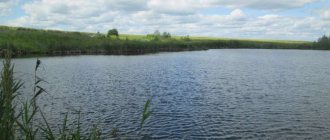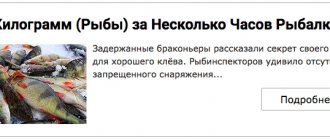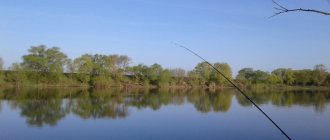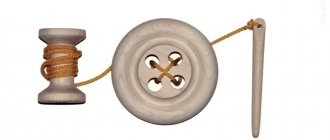Atlantic herring and its other varieties are rightfully included in the menu of national cuisines of many countries. Many different dishes are prepared from these types of fish - sometimes very exotic, such as the Swedish surströmming, famous for its stunning aroma, or the Jewish forshmak, which has gone from the poor table to the famous gourmet restaurants. And the herring fish has been noted in history, literature, proverbs, and it even has its own holiday: Herring Day is celebrated in the Netherlands and Kaliningrad, and in Finland a festival is held in its honor.
Are you preparing salted herring?
- Yes 52%, 272 votes
272 votes 52%272 votes - 52% of all votes
- I buy ready-made 44%, 228 votes
228 votes 44%
228 votes - 44% of all votes
- No 3%, 17 votes
17 votes 3%
17 votes - 3% of all votes
- I don't eat fish 1%, 6 votes
6 votes 1%
6 votes - 1% of all votes
Total votes: 523
03.12.2019
×
You or from your IP have already voted.
Where does it live in Russia?
Where do herring live in Russia? It is mined in the seas:
- Okhotsk;
- Barentsev;
- Severny;
- Norwegian;
- Bel;
- Azov;
- Caspian;
- Cherny.
Sea herring often feeds in the ocean and goes to rivers to spawn (the Caspian-Black Sea subspecies goes to the freshwater Don, Volga, and Ural regions during the spawning period). It is called a fickle fish - it migrates in huge schools, changing one habitat to another.
When does the herring run on the Volga begin?
Herring that comes to the Volga to spawn belongs to two species: Clupea pontica and Clupeacaspia Eichw. Both types are very similar to each other and have minor differences. The herring species Clupeapontica has a blacker back, while the herring species Clupeacaspia has a yellowish belly.

Herring is a passing fish and comes to spawn in large schools. Both types of herring are found in the Caspian and Black Seas and prefer the Volga and Don rivers as their main spawning rivers.
The Black Sea herring is larger and individual specimens reach almost 45 cm, and the Caspian herring is smaller, weighing 0.5-1.5 kg, although individual specimens from 1.5 to 2 kg are often found.
Herring enter the Volga from the Caspian Sea in large schools and begin to rise up the river. For spawning, herring chooses sandbanks and quiet backwaters.
Spawning occurs unevenly, since the herring that came to spawn along with the school are at different stages of readiness for spawning and therefore the spawning period extends over a longer period of time.
Along the Volga, the herring rises all the way to Tver, enters the Oka, and reaches Kaluga and Vyatka. Moreover, Clupeacaspia rises higher along the rivers, while Clupeapontica reaches only Nizhny Novgorod.
In the Caspian Sea, shoals of herring live in the northern part, where the food supply for fish is located - small sea crustaceans.
The movement of the main mass of herring begins on the 20th of April. An earlier or later move depends on weather conditions - winds, which can prevent fish from entering the river. Northern winds often delay the entry of fish into the Volga, forcing schools to wait at the mouth of the river.
The later the herring manage to enter the river, the larger schools gather together, and a more massive movement on the river begins. During the day, a school of herring travels up to 50 km along the river, but as it passes upstream, the speed decreases until the moment when the school stops to spawn. The most intense spawning period occurs in May-early June.
Who eats herring
Man, and for many centuries! And the natural enemies of herring in its habitat are all fish and marine mammals that are larger than it: from whales to cod.
Fact. Until the 16th century, herring was considered the food of the poor and monks undergoing asceticism. Wealthy people would never even think of eating it - it was bitter. The person who guessed to remove the gills and rid the herring of bitterness was awarded a monument. This is a simple fisherman from the Dutch village of Bierflint. His name is Willem Jakob Bolkerzoon. He had no idea that he had become the “father” of a gastronomic revolution! Already in the 20th century, the American writer Joseph Heller wrote a book about the role of herring in human history - he believed that it contributed to the development and prosperity of the Dutch economy.
Features of herring fishing on the Volga
In the spring, with the decline of the flood caused by abundant melting of snow, schools of herring from the Caspian Sea rush up the Volga to spawn. The period of herring shoals lasts from April to November, which allows amateur fishermen to actively fish for this type of fish.
Herring ascending the river are specimens of fish from 0.5 to 1.5 kg, and in the first month of their passage along the river the largest specimens of fish pass and it is important to correctly determine the timing of the passage of the bulk of the fish.
Licenses for herring fishing are issued with the start of fishing on June 15, but when there is a massive fish movement, fishermen rarely adhere to the established fishing deadlines. It is officially permitted to fish for herring only using a spinning rod and fishing rod. It is strictly forbidden to use other types of gear and devices; heavy fines are provided for violating fishing rules.
Herring travel along the river unevenly; schools can move continuously or at large intervals. The most valued herring is that it has a maximum reserve of fat, which is up to 20% at the beginning of the spring run along the river and in late spring when returning to the Caspian Sea for wintering.
Fishing is carried out from the shore using spinning rods and fishing rods, as well as using inflatable boats, which significantly increases the opportunity for anglers to increase the volume of fish caught.
Herring fishing is the most popular and widespread type of fishing during the herring movement along the river to spawn. In settlements located on the banks of the Volga and its largest tributaries, herring fishing is a very popular activity.
Massive uncontrolled fishing undermined the herring population in the Volga and licenses for herring fishing were no longer issued starting in the 2000s. Gradually, the population recovered, and in 2012, a massive movement of herring along the river began, in connection with which the issuance of fishing licenses (herring) was resumed.
Reproduction and lifespan
A female herring can spawn up to hundreds of thousands of eggs. On average, about three weeks pass after fertilization, and the larvae hatch from the eggs. Soon after “birth,” future herring already change their living environment: the larvae are carried away by currents far from the mother. Those of them who manage to survive and grow from eight-millimeter crumbs to 5-6 cm, move in huge masses to the coastlines, where they fatten and grow. The seven-centimeter larva also changes its place of residence from one to another - initially by the will of the currents, then, becoming more mature, together with its large flock.
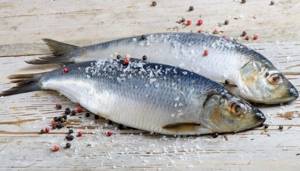
Herring lives on average 6-10 years (if it does not become prey for other fish and mammals that hunt in the water).
Ice fishing
As a rule, the herring stands like a wall under the ice, but not all fish in the school are active. The first step is to choose a place; for this, anglers use their own knowledge or advice received from a guide. First you need to go to working depth. Herring in the lakes is found at a level of 7 meters, so the first holes need to be drilled there.
The main task is to find active fish; for this, several drilling methods are used:
- straight line;
- in a checkerboard pattern;
- in a wide circle;
- cross or envelope.
Random drilling of holes is ineffective, since in this case the picture of the bottom topography remains incomplete. Linear drilling is used when fish need to be searched over a wide area of water. Cross drilling allows you to track changes in depth in four main directions. As in perch fishing, drilling with an envelope is popular among local fishermen, but they resort to it when a school of fish is found and it is necessary to find the epicenter of its location.
Read: Fishing with amphipod bait
Modern fishing means using high-quality equipment. A compact echo sounder will come in handy when ice fishing. If in most cases the device is used to look for relief anomalies, then in herring fishing they first look for the presence of fish. The fact is that a group of underwater inhabitants can number more than one hundred individuals and it makes sense to try to catch in places where fish are densely concentrated. The device also instantly determines the depth and fixes it if necessary. With an echo sounder you can navigate through the holes faster than with a search rod.
Extraction methods
This is a fish of great commercial importance. It travels in huge flocks, and a whole fishing fleet goes out to fish: small, medium and large-tonnage vessels. “Little ones” only catch, unloading the catch to floating bases and factories, medium-sized vessels both deliver and process, and heavy-duty fishing trawlers catch, process on site and immediately freeze. They catch all year round, flights last from 2-3 days to 1 or more months. The location of the schools is determined using echo sounders. Fishermen claim that the schools of this fish resemble rocks and reefs under water: there are no other fish that move in such large schools.
They catch her in several ways:
- using two types of seine - ring and purse seine;
- pelagic trawl;
- nets using the driftnet fishing method.
All methods allow you to “capture” a huge number of fish at once - in 3 minutes you can pull out 100 tons, but fishermen try to catch no more than 60-70 at a time, so that the soft fish does not deform under its own weight.

How to salt herring - recipes
Salting of herring in Rus' began in the ancient Middle Ages. The Russian people, who tried pickled herring, liked the Dutch food. A little time passed and the Russians developed their own recipes for their favorite dish.
There are a huge number of pickling recipes, but their basic requirements remain the same, and by following them you can prepare very tasty herring at home.
It is better to use fresh fish for salting, but this is not always possible. Usually, stores supply fresh frozen fish, and after purchasing one, you need to defrost it properly.
This is done slowly - the herring is placed in a cool place (refrigerator) for several hours, where it will gradually thaw without losing its taste.
There are several salting methods:
- Using brine is the most common practice for salting fish. Processed fish (whole, gutted or in pieces) is placed in the prepared brine and kept in a cool place for several days.
- There is a similar method in which all the steps are the same except for placing the fish in brine in the refrigerator. This option is used for the freshest fish or for impatient herring lovers.
- And a method for lovers of dry salting. Here the components are not dissolved in water, but are applied directly to the fish.
Recipe from the store
Long-term storage of large quantities of fish requires a special recipe. Many people like it.
Brine for 5 kg of herring will be required:
- 450 g salt – 15 tbsp. spoons
- 800 g sugar - 5 glasses.
- Allspice – 25 peas.
- Bay leaf – 12-15 pcs.
- Ground cinnamon - on the tip of a knife.
Place all ingredients in water (3 liters) and boil. Cool the brine and pour it over the prepared herring (just wash). Place in a cool place. After two days, the product is ready for use.
Dry pickling recipe in a bag
The method of this salting is very simple, ideal for salting a small amount of fish.
To prepare two herring carcasses you will need:
- 50 g salt – 1.5 tbsp. spoons.
- 240 g granulated sugar - 1.5 cups.
- 2-3 bay leaves.
Cut the herring into portions. Mix salt, sugar and chopped bay leaf. Rub the resulting mixture onto the fish fillet and place tightly in a plastic bag. Sprinkle the remaining seasoning on top. After 12-24 hours in the refrigerator, the snack is ready.
The above recipes are universal. To add additional flavor nuances, just add spices at your discretion. The proportions of salt and sugar also change the taste of the dish.
Let's celebrate! Fish “zalom” – the legendary herring. Tsars, boyars and ordinary people feasted on it. It is tasty and very healthy. And getting it with your own strength and skill is a great pleasure.
Types of herring with name
There are more than 50 varieties of this fish in the world. Pacific herring and Atlantic herring are two extremely similar species of herring. Previously, the first was called a subspecies of the second; they are similar both in descriptions and in the photo. Experts distinguish them by the number of vertebrae (the first has no more than 55, the second - 55-57) and the keel scales on the abdomen (the second has better developed ones).
Types of Atlantic herring found in our waters:
- Baltic (another name is herring);
- Atlantic-Scandinavian;
- Baltic sprat (it is smaller than the oceanic herring, but belongs to the herring family).
Of particular interest is the Caspian-Black Sea group:
- Kessler (other names - blackback, zalom, king) - from one description and photo of this fish it is clear why today it is an endangered species of herring and is listed in the Red Book: it reaches 52 cm in length and weighs about 2 kg. Fatty and tasty;
- Danube;
- Kerch
- Araucanian herring is found near the coast of Chile and is also a commercial fishery.

Far Eastern
There are three large marine populations of Pacific herring found here:
- Okhotsk;
- Olyutorskaya (aka Corfo-Karaginskaya);
- Gizhiginsko-Kamchatka.
In the south of the Far Eastern waters there are:
- de-castrina;
- Peter the Great Bay;
- Sakhalin-Hokkaido.
Previously, there were more of them, and these were populations known to everyone; today, due to their small numbers, they are known only within the region.
Fact. There are non-ocean fish that are similar to herring, but are mistakenly classified as herring.
- This:
- Pereslavskaya, which lives in Lake Pleshcheyevo - European vendace, belongs to the whitefish;
- Sosvinskaya (lives in the Ob) - also similar, but it is tugun, a relative of salmon.
But the famous (especially in the USSR) Ivasi belongs to the herring family, but in scientific terminology it is called the Far Eastern sardine.
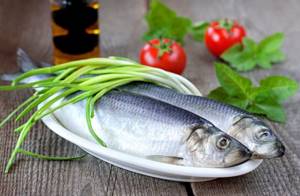
Chemical composition and calorie content
Herring has a rich vitamin and mineral composition. Its main advantage is that it contains high-quality protein and Omega-3 fatty polyunsaturated acids. Protein is easily digestible and is necessary for the construction of cells in the human body (especially for the construction of muscle tissue), and Omega-3 acids are not synthesized by the human body at all, but are necessary for its full development.
Fact. Previously, poorly developing children were given fish oil - this helped saturate the body with Omega-3 acids. Today they are recognized as absolutely necessary and especially important for the development of the human brain, nervous system and eyes.
100 grams of herring contains part of the daily requirement of beneficial vitamins and minerals. This:
- 15% - B6 and riboflavin;
- 46% - D;
- 186% -B12.
- Herring also contains B2, B6, B9, B12, E, PP.
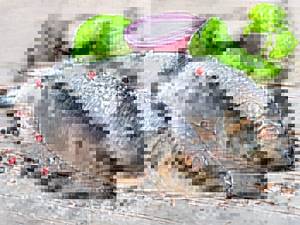
Mineral content per 100 g (in mg):
- K - 310;
- P - 280;
- Na - 100;
- C27H46O (cholesterol) - 90;
- Ca - 60;
- I - 40.
Herring also contains small amounts of iron, sulfur, chlorine and selenium.
The average calorie content per 100 g (more or less depends on the breed of fish and its condition at the time of catching) is 240 kcal. This volume contains 72.3 mg of water, 17.7 g of protein, 19.5 g of fat and 0 carbohydrates.
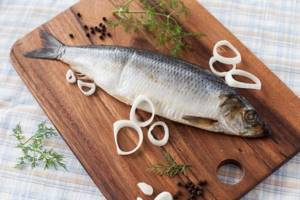
Fact. Herring caviar is no less healthy: it is rich in vitamins A and D. The first has a beneficial effect on the condition of our skin and hair, the second is important for bones and strong immunity. Caviar also contains useful minerals - just like the herring itself, it contains phosphorus, potassium, calcium, iodine, and iron. In the cuisine of European countries, broken caviar is served in marinade or oil, while in Japan they value the caviar (not freed from the film). The yastyki are not thrown away, but are soaked in a marinade of dashi broth and soy sauce. The Japanese generally highly value herring caviar, using it for nigiri sushi and other national dishes. The roe of other fish is called “sakana no tamago” (the literal translation is simple: “fish eggs”) - but only the herring has earned its own name: “kazunoko” (“inexhaustible”).
What to catch herring with - What gear do fishermen use when fishing for herring
Mostly fishing takes place on boats using a spinning rod, but it is important to remember that fishing is prohibited and you can get a good fine for this.

They also fish using different methods using an elastic band, and those who don’t have a boat cast directly from the shore.
As for gear, we mainly use aluminum spinning rods, 0.5 mm thick fishing line and an ordinary inertial reel.
This type of fish is constantly moving at different depths, and in order to reduce the time between catch and hook, it is better to take a fishing line with a certain margin of safety.
An aluminum fishing rod is durable and strong, and is not expensive. Also used are spinners, both oscillating and homemade, which in turn should be in the form of petals of an artisanal shade with a ring for attaching fishing line and hooks soldered into it. It will need to be tied to a spoon, the hook is taken in the range of 7-10 numbers.
Before you start fishing for Caspian herring on the Volga, you will first need to determine the depth of the school of fish.
To do this, throw the spoon to the very bottom and begin to pull, while simultaneously counting the time. Thus, you can approximately determine the depth of its subsidence based on the first leash.
At this time, someone is simply waiting for the fish to start biting, but it is important not to be lazy and determine the depth, as you can catch more herring.
In addition to the boat, there are many who want to fish from the shore, but the catch here is comparatively lower, and fishing is not easy. In order to cast as far as possible, you will need a thinner fishing line, a two-handed fishing rod and an inertial reel.
You can catch herring until late autumn, with large fish most often found during the first spawning and in November.
Herring can be caught all year round, but the success of fishing largely depends on the fisherman, the selection of gear, time, and also taking into account other features.
And some more features of the fishing law: Where to leave the car near the river and how to launch the boat?
Beneficial features
Thanks to its excellent taste, herring has received an honorable place in cookbooks in many countries around the world. And its luxurious protein-vitamin-mineral composition makes it a valuable dish for a healthy and wholesome table. The Swedes have a saying: “Herring on the table, the doctor away.” Eating herring helps:
- prevention of cardiovascular diseases;
- maintaining high levels of immunity and hemoglobin;
- effective functioning of the brain and nervous system;
- strengthening skeletal tissues;
- improving the quality of connective tissues.
Herring is one of the healthiest fish. Despite its significant life expectancy, it does not live in ideal conditions, since it is at the bottom of the food chain relative to aquatic inhabitants that are larger than it. She simply does not have time to accumulate in her body toxic substances contained in water, algae, plankton - mercury, heavy metals.
The quality of herring (here the indicators are freshness and individual parts of meat) can correspond to the first or second grade.
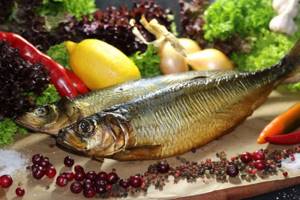
First-class herring is fresh, juicy, firm, without damage to the skin or scales. Fish of the second grade may be old - the fats in it have had time to oxidize, and because of them the smell is sour. The surface of the skin of such herring is dull, with a tendency to yellow, slightly damaged, the meat is dry and tough.
Important! Second-rate lightly salted herring may contain pathogenic bacteria - only a strong concentration of salt (10-15%) prevents them from developing. Marinade (a salty-acid solution with the addition of vinegar) does not guarantee the absence of harmful microorganisms: yeast and mold fungi are immune to its effects. It is not recommended to buy such fish. There is one sign of a “morally obsolete” herring (found even in fiction) - “rustiness,” severe yellowing of the skin and part of the scales. Once upon a time, in poor Jewish families, housewives, in order to make such fish suitable for making mincemeat, soaked it for hours in tea leaves. Today there is no need for this - many producers offer high quality fresh and salted fish.

Description of the species
This genus belongs to the herring family of the same name and the class of ray-finned fish. Herring form large schools that do not disperse throughout the entire calendar year. The body of the herring is elongated, laterally compressed. The belly is pointed towards the bottom, light in color. The color of the fish changes slightly to lighter or darker depending on its habitat. Typically, herring has silvery scales that are relatively large in size. Many anglers note that the scales easily bounce off the fish when you hold it in your hand. The back of the individuals is dark, the head is moderate in size.
The caudal, dorsal and anal fins are black, the ventral fins are light. Herring does not reach particularly large sizes; individuals from 300 to 800 grams are more often caught on the hook. Since the fish are schooling, fishing is successful when it is possible to spot a silvery beauty.
Herring activity depends on many factors:
- weather conditions;
- time of day;
- seasonality;
- selected fishing location;
- equipment used.
Year-round spawning of herring ensures the maintenance of the species population, despite constant fishing on an industrial scale.
Read: Catching pike perch on a winter night is not a problem!
Herring food consists of invertebrates and crustaceans. The fish also feeds on fry. Herring gained commercial importance not because of its taste, but rather because of its numbers. Fishing vessels salt their catch directly on board, rolling it into barrels. Herring also comes to the market fresh, it is fried, baked and used for various dishes.
